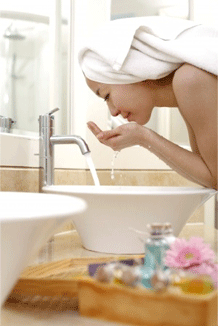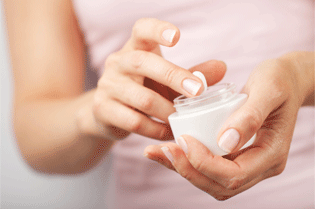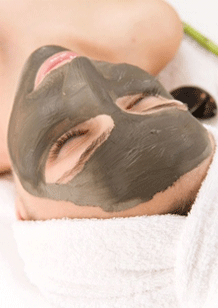 Loading... Please wait...
Loading... Please wait...- Home
- Take the Mystery out of Skincare
- Learn About Skincare
Learn About Skincare
Cleaning Your Face
 The next step after determining your Dosha is cleansing. Clean your face with lukewarm water. This will loosen the dirt off your face and unclog the pores. Take a bit of cleansing milk and rinse with cool water. Apply the cleanser on your face and leave it for half a minute. Wash your face thoroughly with water.
The next step after determining your Dosha is cleansing. Clean your face with lukewarm water. This will loosen the dirt off your face and unclog the pores. Take a bit of cleansing milk and rinse with cool water. Apply the cleanser on your face and leave it for half a minute. Wash your face thoroughly with water.
Apricot Cleansing Milk
Cucumber & Honey Cleansing Milk
Himalayan Berry Calming Wash
Exfoliate
 As we age the process of cell turnover slows down. Cells start to pile up unevenly on the skin's surface giving it a dry, dull appearance. Exfoliation removes those cells that are clinging on, revealing the fresher, younger skin cells below.
As we age the process of cell turnover slows down. Cells start to pile up unevenly on the skin's surface giving it a dry, dull appearance. Exfoliation removes those cells that are clinging on, revealing the fresher, younger skin cells below.
Exfoliation is the best way to assist your skin to carry out the process of removing dead cells and replacing them with new cells effectively. This process should be done after cleansing. After washing your face with lukewarm water, apply an exfoliating scrub (suitable for your skin) onto your fingertips. Rub your face with your fingertips using circular motions, for a minute or two. Rinse the face with water. See: Orange & Green Tea Face & Body Polish
Moisturize
 Moisturize your face after exfoliating it. A moisturizer containing aloe vera gel and natural anti-oxidant extracts is preferable. Apply the serum and moisturizer after exfoliation, while the skin is still damp.
Moisturize your face after exfoliating it. A moisturizer containing aloe vera gel and natural anti-oxidant extracts is preferable. Apply the serum and moisturizer after exfoliation, while the skin is still damp.
Indian Ginseng Revitalizing Serum
Ren Shen Rejuvenating Serum
Hydrating Basil Face Gel
Ingredients to Avoid
SYNTHETIC FRAGRANCES often contain phthalates, synthetic chemicals commonly used to stabilize fragrances and make plastic more pliable. These endocrine disrupters mimic hormones and may alter genital development. Avoid products that list fragrance as an ingredient unless the label states that it’s derived from essentials oils, or look for a phthalate-free label on the packaging.
PARABENS, ubiquitous in skincare they preserve other ingredients and extend a product’s shelf life. These antimicrobial chemicals have hormone-disrupting effects.
1,4-DIOXANE, a chemical carcinogen, is created when ingredients are processed with petroleum-derived ethylene oxide. Common ethoxylated compounds include sodium laureth sulfate and polyethylene glycol (often listed as PEG). To avoid it, skip any product with the following ingredients: myreth, oleth, laureth, ceteareth (or any other -eth), PEG, polyethylene, polyethylene glycol, polyoxyethylene, or oxynol.
PETROCHEMICALS are derived from crude oil. Petroleum-based ingredients such as petrolatum, mineral oil, and paraffin (derived from nonrenewable sources) form a barrier when applied to the skin that does not allow it to breathe and can clog pores.
SULFATES, such as sodium lauryl and sodium laureth, are harsh detergents that give cleansers, soaps, and shampoos their latherability. Often derived from petroleum, sulfates can also come from coconut and other vegetable oils that can be contaminated with pesticides. Sulfates can cause eye irritation and skin rashes.
SYNTHETIC POLYMERS, such as sodium polyacrylate and carbomer, come from petroleum and give viscosity to skincare products. They are highly processed and their manufacture creates toxic by-products.
SYNTHETIC COLORS are made from coal tar. They contain heavy metal salts that may deposit toxins onto the skin, causing skin sensitivity and irritation. Studies have shown almost all of them to be carcinogenic. They will be labeled as FD&C or D&C, followed by a color and a number.
ANIMAL TESTING: A grim history of cruelty to animals lies behind many cosmetic ingredients. Scientists have developed new technologies to test cosmetics that don’t involve animals.
